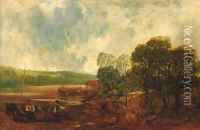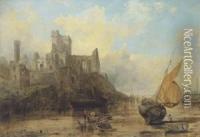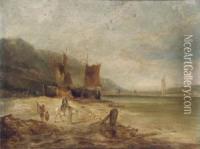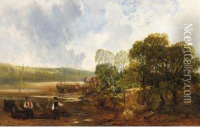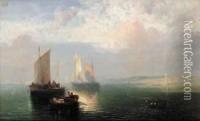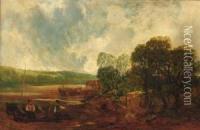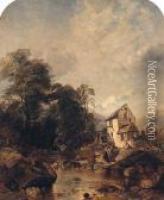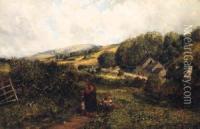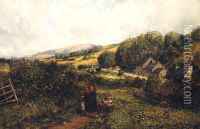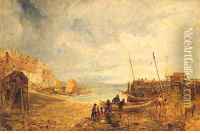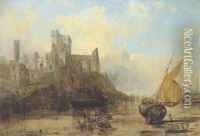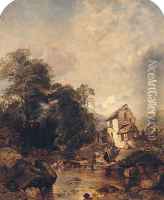John Wright Oakes Paintings
John Wright Oakes was a British landscape painter known for his depiction of British and European scenery. Born in 1820 in Salford, Lancashire, England, Oakes developed an affinity for art at a young age. He was particularly influenced by the work of the great English landscape artist, John Constable, and sought to capture the natural beauty of the countryside in a similar vein.
Oakes received his formal art education at the Manchester School of Art and continued to refine his skills under the tutelage of the landscape painter William Wyld. His early work was marked by a meticulous attention to detail and a deep appreciation for the subtleties of light and shadow, which became hallmarks of his style.
In the 1840s, Oakes began exhibiting his work at the Royal Academy and the British Institution, quickly gaining recognition for his talent. His paintings often featured idyllic scenes of the English and Welsh countryside, showcasing his ability to render the lush greenery and serene waterways with a sense of tranquility and poetic grace.
Throughout his career, Oakes remained dedicated to landscape painting, although he occasionally painted historical and literary subjects. He was known for his technical skill and his ability to evoke mood and atmosphere through his use of color and composition. His works were well-received, and he built a solid reputation as a landscape artist during the Victorian era.
Oakes became an Associate of the Royal Academy in 1859, cementing his status as a respected member of the British art community. Despite his success, he never sought the limelight and preferred to let his work speak for itself.
John Wright Oakes continued to paint until his death in 1887. His legacy lives on through his contributions to the genre of landscape painting, and his works are still admired today for their beauty and technical mastery. They can be found in various art collections and museums across the United Kingdom and beyond.
